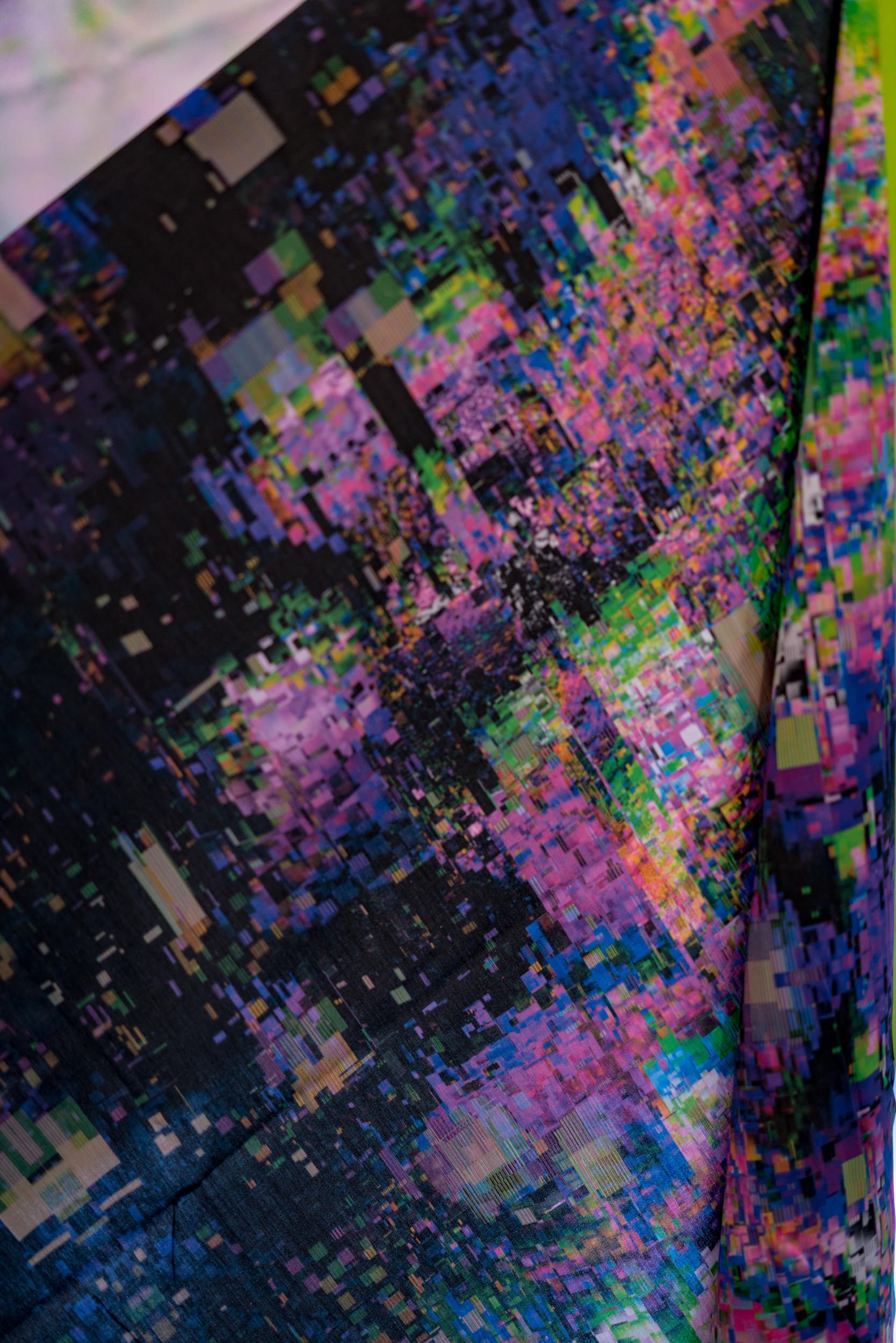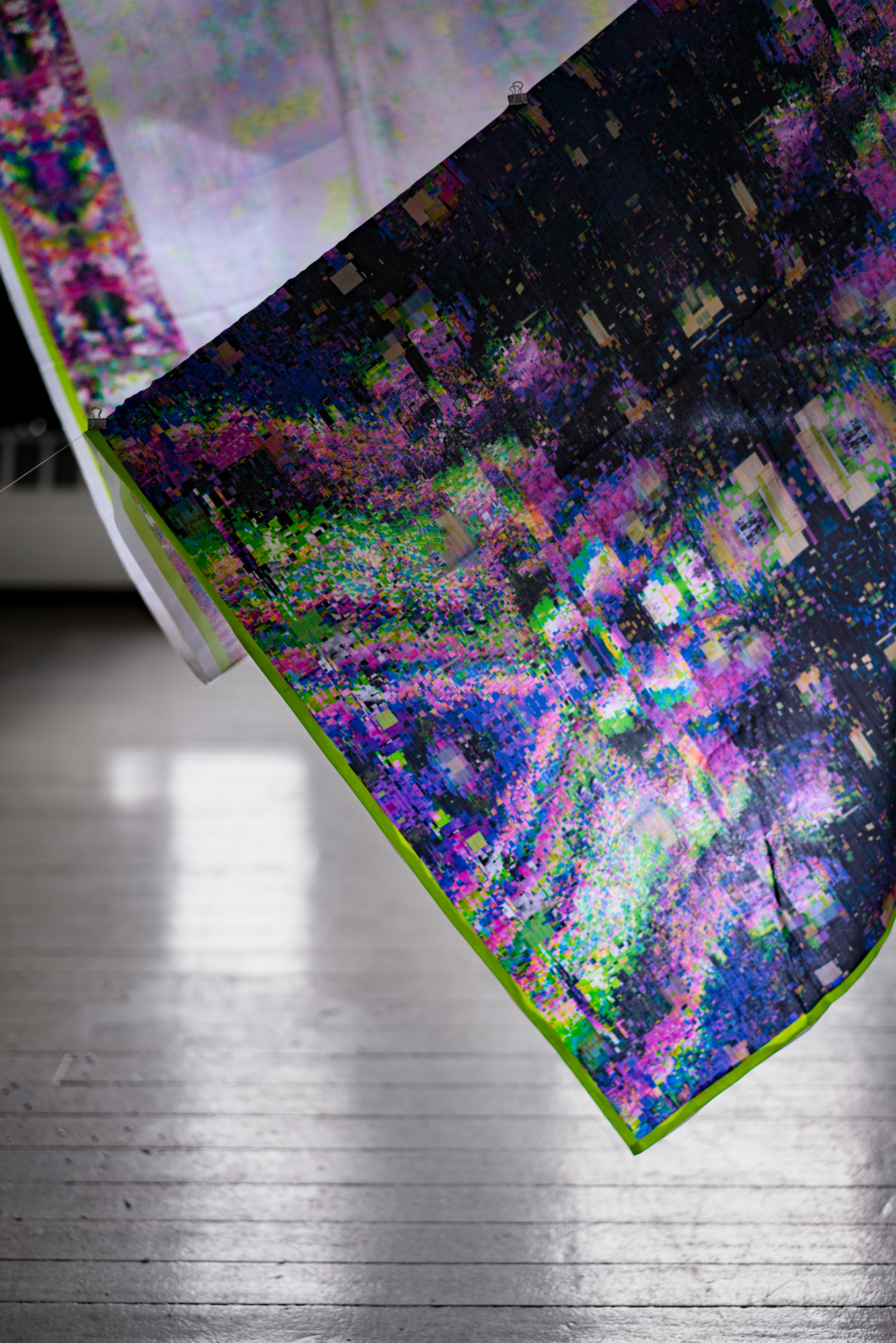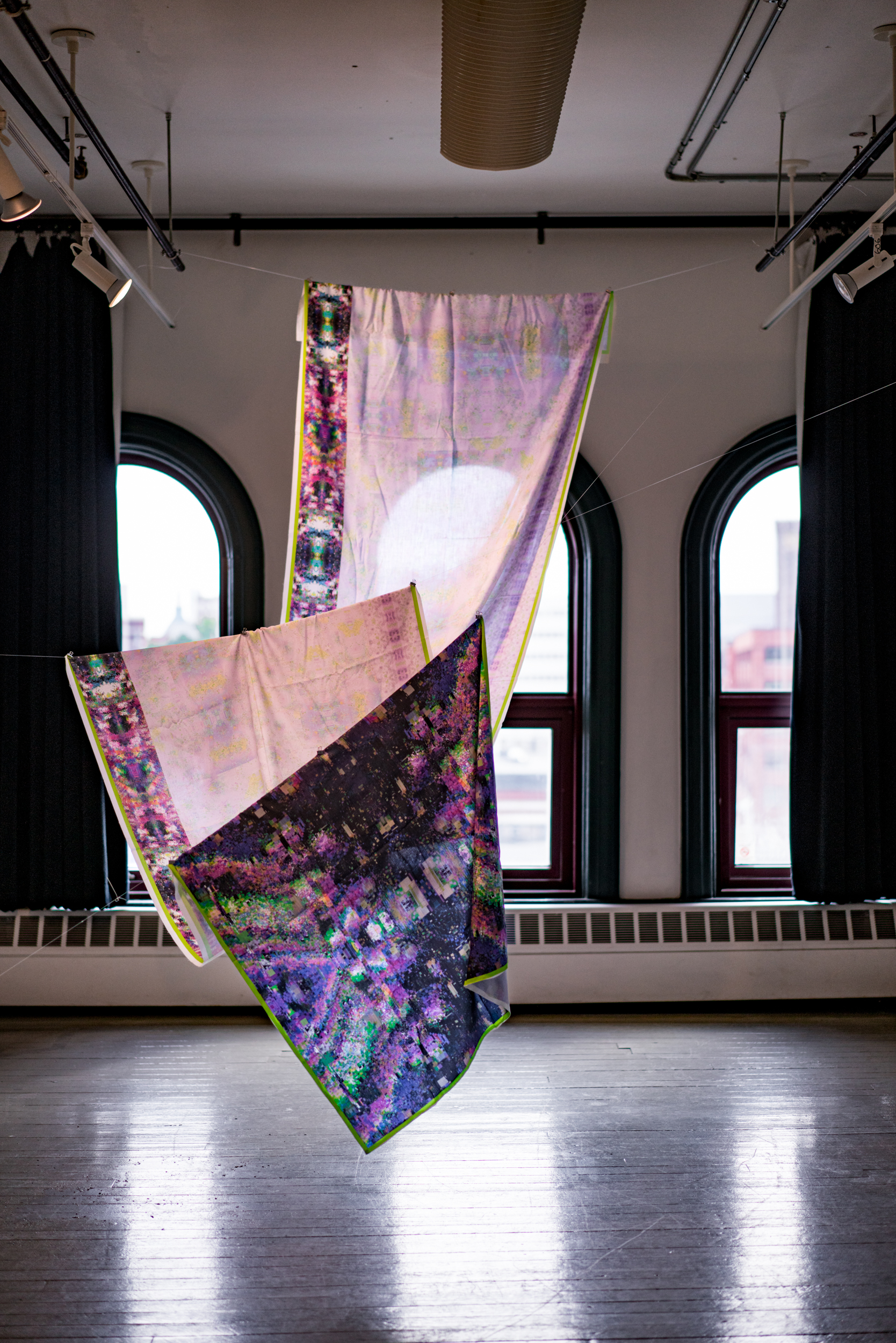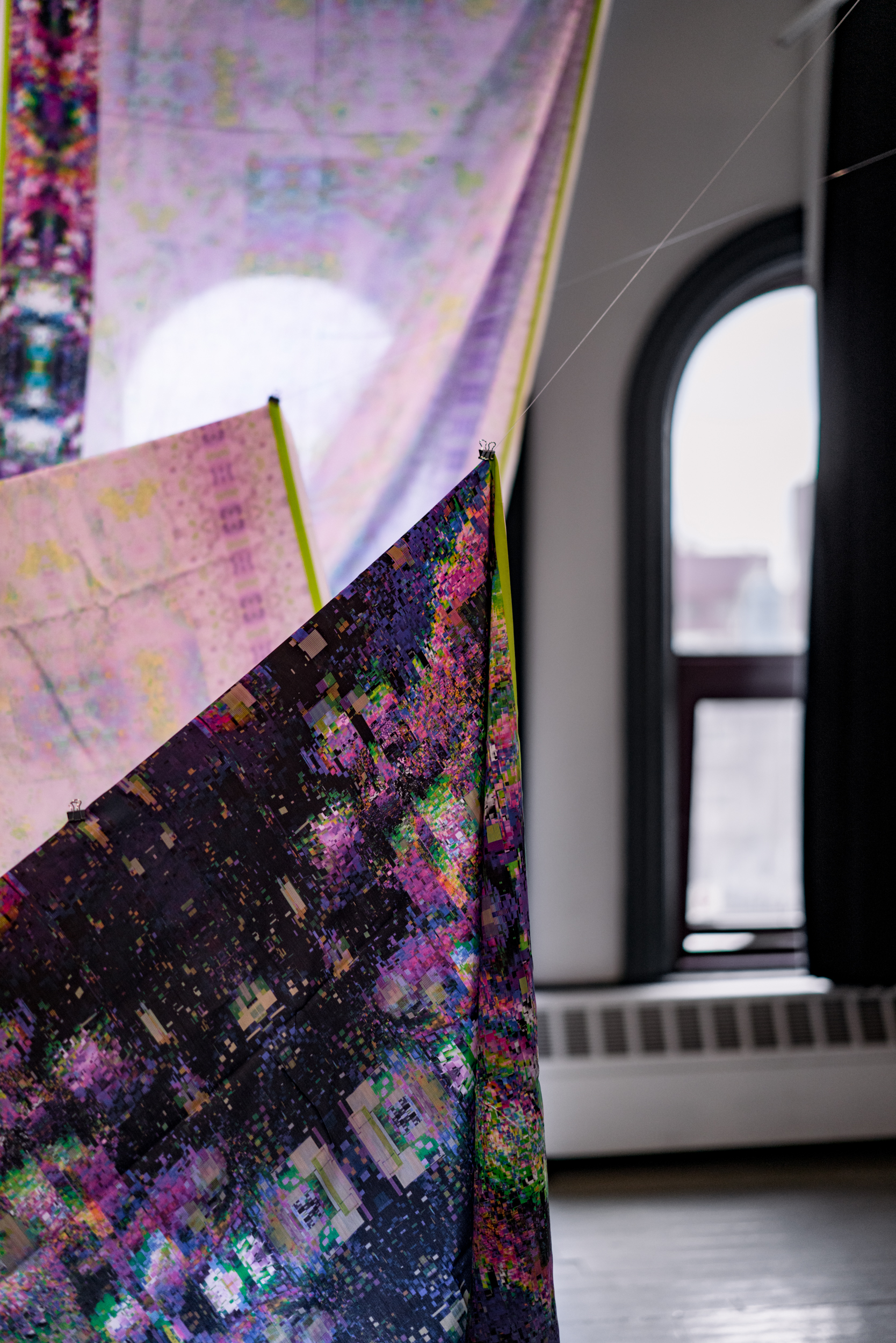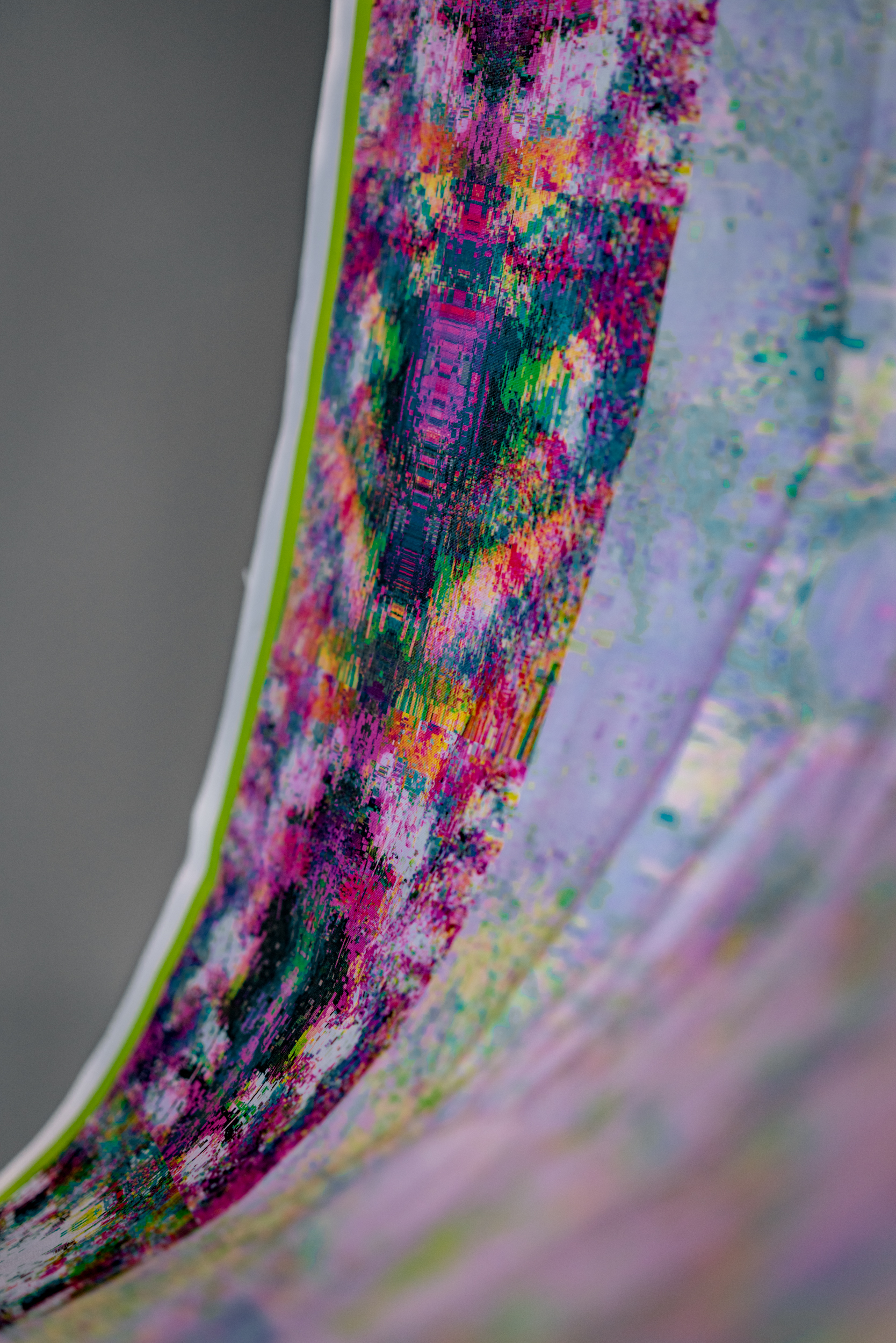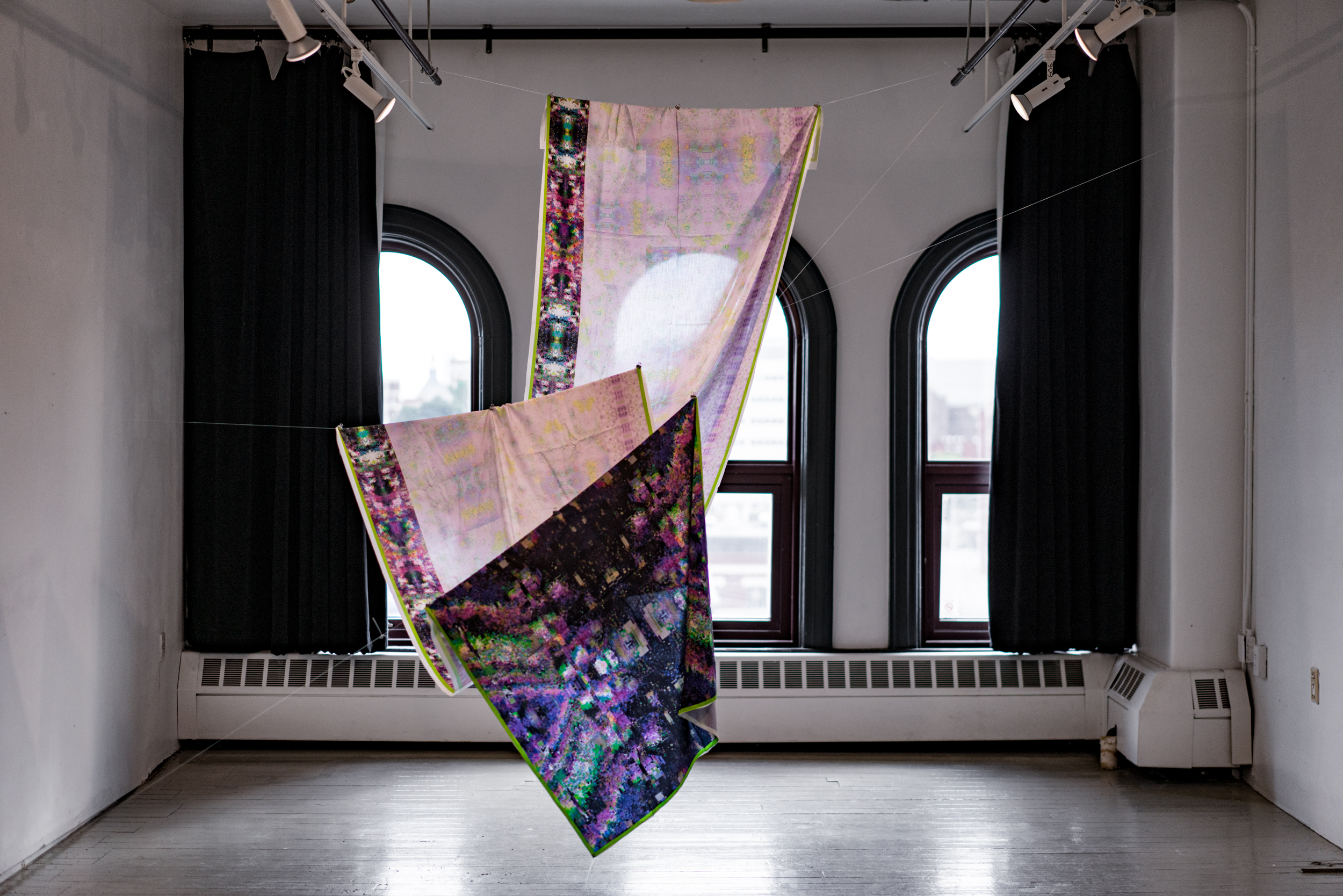
Gitanjali No. 60
This multi-part project begins with an exploration into a way of engaging with my personal heritage through an inherited archive of saris from my late grandmother. Investigating questions of heritage, maternal lineage, longing, belonging, memory, and the translation of tradition into futurity, I chose to do so through the form of traditional clothing—saris. Clothing represents the entry point to connection between generations of my maternal line, and also presents a platform for me to explore ideas of womanhood, protection, and identity through the feminine body.
I developed several iterations of image and pattern to design a sari that transformed one set of images into a digitally manipulated set of patterns that aligned with certain traditional parameters while transforming others. Using images of patterns from the inherited saris, I glitched, refracted, and splintered them into a new set of patterns that expressed my own personal identity and style. The Glitch emerged as an important visual analogy for my personal diasporic experience of being split between multiple identities, as well as the diasporic habit of engaging with ancestral heritage through digital means.
One thread that informed my original project is the fact that a sari is an inherent aspect of a Bengali woman’s identity—yet, through my diasporic upbringing, it is something I have never learned to wear myself. It is a metaphor for a heritage I have inherited, yet do not have the embodied knowledge to understand.
I developed several iterations of image and pattern to design a sari that transformed one set of images into a digitally manipulated set of patterns that aligned with certain traditional parameters while transforming others. Using images of patterns from the inherited saris, I glitched, refracted, and splintered them into a new set of patterns that expressed my own personal identity and style. The Glitch emerged as an important visual analogy for my personal diasporic experience of being split between multiple identities, as well as the diasporic habit of engaging with ancestral heritage through digital means.
One thread that informed my original project is the fact that a sari is an inherent aspect of a Bengali woman’s identity—yet, through my diasporic upbringing, it is something I have never learned to wear myself. It is a metaphor for a heritage I have inherited, yet do not have the embodied knowledge to understand.
My interest, however, is not only about understanding the past: it is about making it mine. The process recontextualizes and translates the stories and lessons of my grandmother and mother through my own voice. The result is a new visual language that I am discovering as I create it.
The sense of longing for belonging, and personal engagement with heritage and identity is one that is challenging to develop visually. Capturing the complexity of emotions, memory, futurity, and generational connection is a process that I am seeking to capture in various ways. In the second part of the project, I use sequence, audio, and moving image.
Through a hybrid documentary film, I explore a method of expressing the narrative of this experience in a sensory, dreamy way. Abstraction and visual collage creates an emotional landscape that evokes the feeling of being awash in overlapping memories and feelings; it is ephemeral, unpolished and textured, a watery and glitchy exploration of the thin veils between life and death, between here and there, between America and Bangladesh, between myself and my heritage. I use performance, learning to wear the sari I designed with my mother instructing me over FaceTime, laid over fractured, data-moshed, glitched abstract visuals. The project takes the name of a poem by Rabindranath Tagore, one which captures the essence of my grandmother and the complex mix of hope and grief over her passing.
The sense of longing for belonging, and personal engagement with heritage and identity is one that is challenging to develop visually. Capturing the complexity of emotions, memory, futurity, and generational connection is a process that I am seeking to capture in various ways. In the second part of the project, I use sequence, audio, and moving image.
Through a hybrid documentary film, I explore a method of expressing the narrative of this experience in a sensory, dreamy way. Abstraction and visual collage creates an emotional landscape that evokes the feeling of being awash in overlapping memories and feelings; it is ephemeral, unpolished and textured, a watery and glitchy exploration of the thin veils between life and death, between here and there, between America and Bangladesh, between myself and my heritage. I use performance, learning to wear the sari I designed with my mother instructing me over FaceTime, laid over fractured, data-moshed, glitched abstract visuals. The project takes the name of a poem by Rabindranath Tagore, one which captures the essence of my grandmother and the complex mix of hope and grief over her passing.
